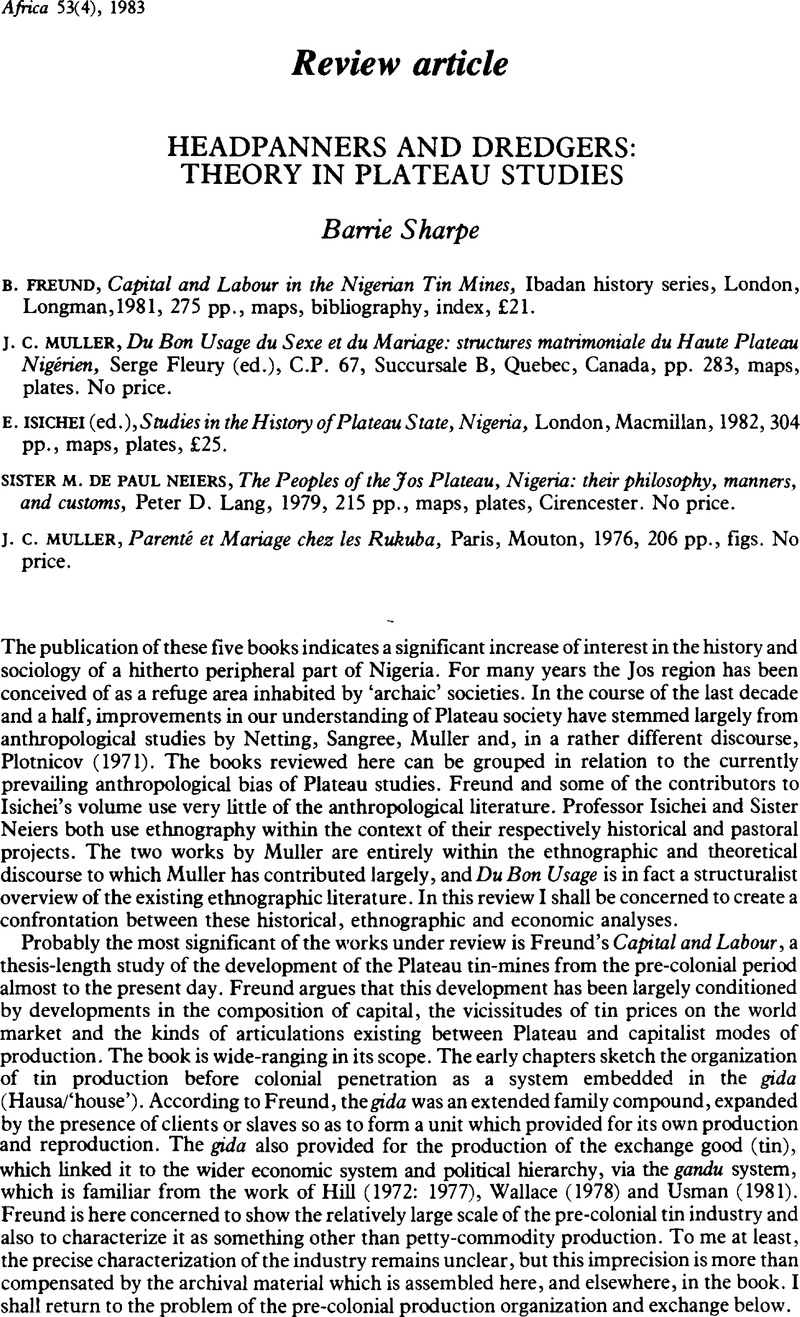Crossref Citations
This article has been cited by the following publications. This list is generated based on data provided by Crossref.
Muller, J. C.
and
Sharp, Barrie
1984.
Marriage rules on the Plateau: an exchange.
Africa,
Vol. 54,
Issue. 4,
p.
22.





